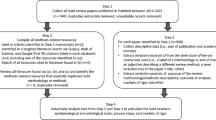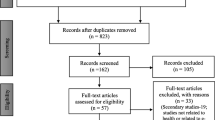Abstract
As part of their training, physicians develop excellent patient communication skills. However, with a constellation of responsibilities that impinge on a physician’s time, it is not always possible to convey appropriate amounts of information such that patients can use this to enhance their health. Physicians also may not select the educational resources that best fit each patient’s needs, based on educational level of the patient. At The Commonwealth Medical College, one strategy we have utilized to demonstrate to students how to deliver an understandable diagnosis, instructions for treatment, or other medical information, was having our first year medical students write pamphlets on a disease covered in one of our small group cases for problem-based learning (PBL). The goal of the pamphlet was to explain a particular disease in layman’s terms, and to present information that patients would need in order to deal with a particular disease. Students were asked to write pamphlets during the first basic science course they encountered, the Cellular and Molecular Basis of Life. The problem-based learning case was on Bloom’s Syndrome, a genetic disease discussed in this course. Different groups approached the project in different ways, but all had a great deal of creativity in their final product. We include examples of these brochures to demonstrate the effectiveness of this exercise. These brochures were part of the narrative evaluation of our students, as the course was pass/fail. Students were given verbal feedback by their PBL facilitator as well. We present three examples of these pamphlets, and include an evaluation of these pamphlets by the faculty not shared with the students in which we used the Suitability Assessment of Materials (SAM) tool to assess how well the students had met the goal of developing a useful tool for patient education and an on-line readability tool that assesses the readability of the patient education materials by several readability assays.





Similar content being viewed by others
References
Davis TC, Wolf MS. Health literacy: implications for family medicine. Fam Med. 2004;36:595–8.
Doak, C.C., Doak, L., Root, J.H.: Teaching patients with low literacy skills 2nd ed. Philadelphia, J.B. Lippincott Co. (The SAM tool, based on this paper, was obtained from the following URL: http://www.p-h.com/pages.php?pageid=8.)1996.
Farnsworth M. Differences in perceived difficulty in print and online patient education materials. Perm J. 2014;18(4):45–50.
Kelly PA, Haidet P. Physician overestimation of patient literacy: a potential source of health care disparities. Patient Educ Couns. 2007;66:119–22.
Kincaid, J.P., Fishburne, R.P. Jr., Rogers, R.L., Chissom, B.S.: Research branch report 8-75: derivation of new readability formulas (Automated Readability Index, Fog Count and Flesch Reading Ease Formula) for Navy enlisted personnel. URL: http://www.dtic.mil/dtic/tr/fulltest/u2/a006655.pdf.1975.
Kloza EM, Haddow PK, Halliday JV, O’Brien BM, Lambert-Messerlian GM, Palomaki GE. Evaluation of patient education materials: the example of circulating cell free DNA testing for aneuploidy. J Genet Couns. 2015;24(2):259–66.
Rhee RL, von Feldt JM, Schumacher HR, Merkel PA. Readability and suitability assessment of patient education materials in rheumatic diseases. Arthritis Care Res. 2013;65(10):1702–6.
Ryan L, Logsdon MC, Stikes R, Senior B, Helinger B, Small B, et al. Evaluation of printed health education materials for use by low-income families. J Nurs Scholarsh. 2014;46:218–28.
Stossel LM, Segar N, Gliatto P, Fallar R, Karani R. Readability of patient education materials available at the point of care. J Gen Intern Med. 2012;27:1165–70.
Wallace AS, Seligman HK, Davis TC, Schillinger D, Arnold CL, Bryant-Shilliday B, et al. Literacy-appropriate educational materials and brief counseling improve diabetes self-management. Patient Educ Couns. 2009;75:328–33.
Weintraub D, Maliski SL, Fink A, Choe S, Litwin MS. Suitability of prostate cancer education materials: applying a standardized assessment tool to currently available materials. Patient Educ Couns. 2004;55:275–80.
Author information
Authors and Affiliations
Corresponding author
Ethics declarations
Conflict of Interest
The authors declare that they have no competing interests.
Rights and permissions
About this article
Cite this article
Doane, K.J., Boyd, P. Authoring of Patient Education Materials by Medical Students: an Activity Designed to Demonstrate Communication to the Lay Public. Med.Sci.Educ. 26, 47–52 (2016). https://doi.org/10.1007/s40670-015-0182-y
Published:
Issue Date:
DOI: https://doi.org/10.1007/s40670-015-0182-y




